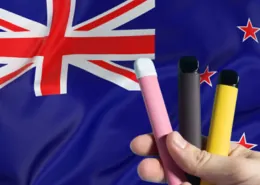Kazakhstan’s Vape Ban Fuels Thriving Black Market Within a Year
A year has passed since Kazakhstan enacted a sweeping ban on the sale, manufacture, and distribution of electronic cigarettes and vaping devices on April 19, 2024. The legislation, which carries penalties ranging from fines and arrests to imprisonment and property confiscation for large-scale trafficking, aimed to curb the growing popularity of vaping, particularly among minors. However, as a “Kursiv” correspondent discovered, the ban has given rise to a thriving black market that operates under principles akin to drug trafficking, making it relatively easy to purchase these prohibited products.
The Vaping Landscape Post-Ban
The ban has significantly altered the vaping landscape in Kazakhstan. One elderly man, who once freely enjoyed his homemade vaping device in his courtyard, now reserves it for special occasions due to the scarcity of liquid nicotine. He has switched to a pod-system heat-not-burn tobacco device but remains dissatisfied with the ban, believing his homemade e-liquid was less harmful than store-bought ones.
Mazhilis deputy Mukash Iskandirov, who opposed the ban in 2023, maintains his stance, arguing that strict regulation would have been more effective than prohibition. He points to Russia’s recent abandonment of similar plans, acknowledging that bans inevitably drive markets underground and breed corruption.
The Rise of the Black Market
Despite the ban, obtaining vapes in Kazakhstan has become as simple as ordering food through Telegram channels. In an experiment conducted by the editorial team, a vape was purchased and delivered to the office door within 30 minutes, with payment made via Kaspi. Vendors offer various delivery methods, including “dead drops” and disguised packaging, to minimize risks for couriers.
Representatives of tobacco associations highlight the concerning trend of people returning to cigarettes, including illegal, non-excise brands, as a result of the ban. Dmitry Zhukov, Executive Director of the QazSpirits Association, emphasizes that closing the vape market is technically impossible, as devices can be easily assembled from readily available components.
Protecting Minors or Ineffective Prohibition?
Deputy Nurgul Tau, however, believes the ban has yielded results, particularly in restricting minors’ access to vaping devices. She acknowledges the challenge posed by Telegram channels but notes that the control mechanism is now fine-tuned, with youth actively reporting illegal sales points.
Tau also highlights the loophole in the current law, which doesn’t prohibit possession of vapes, and the alarming discovery of vapes disguised as children’s toys with high nicotine content. Her colleague, Yelnur Beisenbayev, echoes the sentiment that the ban has been effective in curbing widespread distribution among schoolchildren.
Lobbying and the Future of Vaping Regulations
Accusations of lobbying for tobacco companies’ interests have been dismissed by lawmakers, who argue that the tobacco industry is strictly regulated, unlike the previously uncontrolled vape market. Mazhilis member Aidos Sarym believes the ban has created more problems than solutions and suggests that not all popular social media topics should be formalized into laws.
Beisenbayev, on the other hand, stands firm on the decision to ban vapes and believes it shouldn’t be reconsidered until the government presents clear proposals for regulation based on international experience. Mukash Iskandirov, however, is confident that the government and parliament will eventually revisit the issue, abandoning the prohibition in favor of regulation.
Conclusion
As Kazakhstan marks one year since the vape ban, the country grapples with the unintended consequences of prohibition. The thriving black market, the return to traditional cigarettes, and the ongoing challenge of protecting minors from vaping highlight the complexities of regulating this rapidly evolving industry. While opinions among lawmakers remain divided, the future of vaping in Kazakhstan hangs in the balance, with the potential for a shift towards regulation on the horizon.
- Is It Illegal to Vape or Smoke While Driving in Minnesota? - August 15, 2025
- American Airlines Vaping Passenger Alleges Assault in Police Report - August 15, 2025
- NEXA PIX 35K Disposable Vape with Crystal Tank Review - August 15, 2025








